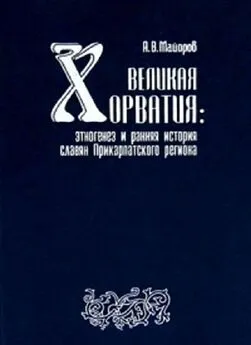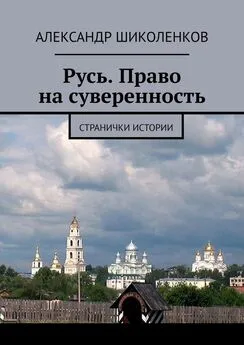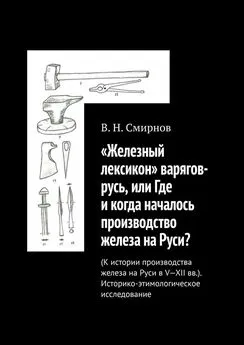Александр Майоров - Русь, Византия и Западная Европа: Из истории внешнеполитических и культурных связей XII—XIII вв.
- Название:Русь, Византия и Западная Европа: Из истории внешнеполитических и культурных связей XII—XIII вв.
- Автор:
- Жанр:
- Издательство:Дмитрий Буланин
- Год:2011
- Город:СПб.
- ISBN:978-5-86007-650-1
- Рейтинг:
- Избранное:Добавить в избранное
-
Отзывы:
-
Ваша оценка:
Александр Майоров - Русь, Византия и Западная Европа: Из истории внешнеполитических и культурных связей XII—XIII вв. краткое содержание
Русь, Византия и Западная Европа: Из истории внешнеполитических и культурных связей XII—XIII вв. - читать онлайн бесплатно полную версию (весь текст целиком)
Интервал:
Закладка:
Diminishing of the role played by the prince of Galich and Volyn Roman Mstislavich in the political life of South Rus' and his uniting the Russian princes for the campaigns against the Polovtsy is typical for the North-Eastern Chronicle tradition first of all because of the political views of chronicler Simon, who arrived from Kiev to Vladimir Suzdalsky in the beginning of the 13th c. and afterwards became the bishop. Tightly connected to the family of the Kievan prince Rurik Rostislavich, the main enemy of Roman in his struggle for Kiev, Simon having arrived to Vladimir became serving the interests of king Vsevolod the Big Nestle who perceived Roman as a dangerous competitor in the influencing the South Russian lands.
Prince Vsevolod was also alien to the foreign policy of Roman who supported the Byzantine authorities in the fight with the rebellious Bulgarians and the Danube Polovtsy which backed them. The prince of Vladimir Suzdalsky had the immediate contacts with the head of the Bulgarian uprising and avoided military assistance of Byzantium of purpose.
Military aid by Roman was guaranteed with the matrimony of the prince of Galich and Volyn and Alexios' niece, the elder daughter of the overthrown emperor Isaac II. On coming the second wife of the prince of Galich and Volyn she continued playing the key role in the political life of South Rus' for years. The chronicle preserved not the name of the princess who is called by the husbands name only: «the great Roman's princess». But we can fill this white space. The junior sister of the princess of Galich and Volyn, Irene, who had come the consort of German king Philip, had her sister's name put down to the necrology of the Speier cathedral. Among the other Greek relatives of queen Irene the name of her elder sister Euphrosine is mentioned.
They were aware of the fate of German relatives of «the great Roman's princess» in Galich as well. The distinct information about the death of king Philip the Schwab at summer of 1208, which was soon followed with that of his queen, can be found in the Chronicle of Galich and Volyn. The detailed story of the circumstances of the murder of Philip was put down and the persons implicated in it were mentioned here. There is no such information in the other Russian chronicles. The details of such distinct events could be of some interest only for the relatives of the perished. And princess Euphrosine with her children were such persons.
Near by the Polish town of Chelm (Old Russian Holm) the ancient stone tower five levels (stories) high, the remnants of chapel on the top of it, is still preserved. This tower rises at the spot where the Old Russian town of Stolpie (Towers) existed sometimes. According to the last investigations the tower of Stolpie is the replica of the edifices widely spread in the North of Greece and appeared to be the cult buildings belonging to the monasteries and the secular lords. The literary sources say that most probably the tower of Stolpie was built in 1220–1240s for «the great Roman's princess» who had become the nun again.
The activity of Euphrosine, the princess of Galich, is seen in the old Russian seals. Several seals from old Novgorod have the image of St. Euphrosine of Alexandria on avers and the image of Transfigutation of Our Lord on the mount of Favor on reverse. There are no grounds to identify the owner of this seals with St. Euphrosine of Polotsk, since she had nothing to do with the foundation of the Transfiguration church or monastery in Polotsk. The Savior's nunnery and the church founded by St. Euphrosine were dedicated to the ancient fest of the Savior Misericors. There is no evidence of any relationship of St. Euphrosine with Novgorod.
But there were tight links between Euphrosine of Galich and Novgorod. She, without doubt, corresponded with prince of Novgorod Mstislav the Brave whose daughter Ann married Daniel, the elder son of widowed princess of Galich. Mstislav himself influenced with the news coming from the South-Western Rus', abdicated from Novgorod throne and resolutely interfered in the struggle for Galich with Hungarian prince Koloman and became the new prince of Galich soon.
There is a great reason to connect the wide spreading of cult of Transfiguration in Galich and Volyn with Euphrosine of Galich. The numerous monasteries and churches of Transfiguration mentioned in the literary sources date back to the 13th c. The numerous former altar icons of Transfiguration of the West Ukrainian lands came from the 13–14th cc. up to our time.
One more name Euphrosine is famous under in the scientific literature is Ann, which she must have taken on returning to nunnery in the beginning of the 1220s. The connection of «the great Roman's princess» with the cult of St. Ann, Our Lady's mother, is witnessed with the chapel of St. Joachim and Ann built on her grave according to the chronicle of Galich and Volyn. There is the unique icon of the «Assembly for St. Joachim and Ann» painted at the edge of 13–14th cc. and copying the older altar icon.
The name of Ann and the scene of Transfigutation used by the princess of Galich at her personal seals (such scene is quite unique for the Russian seals and is very rare for the Byzantine ones) can indicate some personal attitude of the elder daughter of Isaac II to the memory of the nun-empress Anna Dalassina which was honored as the ancestor of all the Comnenos and the Angelos at the Byzantine court.
It is thanks to Euphrosine of Galich that several famous Christian relics of both liturgical and political (as the insignia of power) significance appeared in Galich and Volynian Rus'. First of all it was the reliquary cross with the particle of Holy Cross which is kept in Our Lady's of Paris. «Crowned Manuel Comnenos» is ought to be identified with Manuel I.
The creating of the Galich Aprakos Gospel of the beginning of the 13th c. (now in the State Tretyakov Gallery in Moscow) is also connected with Euphrosine of Galich. The miniatures and ornaments illuminating the manuscript are considered to be some of the best examples of the Russian artistic bookwork.
The influence of great princess Euphrosine explains the appearance of unusual and unique Christian names among the Galich and Volynian Rurikides. First of all it is the name «Daniel», which was adopted by the Moscow princes afterwards. This name became in use thanks to the spreading of the cult of Daniel Stylites and rising of the interest in the attributes of stylites which can be seen in sigillography and in the numerous architectural monuments of Galich and Volyn of the 13th — beginning of the 14th c. as well. Thanks to the family links of the Galich and Volyn princes and their Vladimir Suzdalsky this cult spread in the North- East of Rus' and then in Moscow.
Euphrosine being the daughter of Isaac II the interest in the stylites increased among the princes. According to Niceta Choniate emperor Isaac showed hot love and especially protected the stylites and the hermits astonishing the contemporaries, because since the times of iconoclasm stylites lost their previous influence on the emperors and their movement declined.
Byzantine hagiographical tradition on St. Daniel Stylites and emperor Leo the Great explains the connection of the names Daniel and Lev (Leo) among the descendants of Roman Mstislavich and Euphrosine. Daniel Stylites was the spiritual father and the main councilor of emperor Leo I. It seems as if this circumstance reflected in the pair of names of the Galich princes: father and son — Daniel Romanovich and Lev Daniilovich.
The name of prince Iraclii (Hercules) Daniilovich is connected with cult of the Holy Cross. Though the Byzantine emperor Hercules I who returned the main Christian relic the Holy Cross from the Persian captivity hadn't been canonized by the Chuch his memory was worshiped both in the East and in the West. The special interest in Hercules marked the Crusade epoch in Europe, when his name became the symbol of liberating and the defense of Holy Land and thus impressed in numerous monuments of art and literature and in the names of Patriarchs of Jerusalem also.
Together with the untypical for the Rurikides «Byzantine» names of the Galich princes the political and cultural inheritance of Roman Mstislavich displayed in some attributes and symbols of the imperial power. First of all it is the double-headed eagle known from the descriptions of the monumental sculptures and the information about the territorial symbols of Galich and Volynian Rus'. Depicting the appearance of Daniel the chronicler witnesses the unusual case of bearing «Greek olovir». This special term meant «real» or «imperial» purple.
The external attributes of the imperial dignity corresponded to the imperial title of the Princes of Galich and Volyn. Using the title «tsar» and «autorcator» and the derivates towards the princes of Galich and Volyn is seen in the numerous literary sources all the 13th c. along. The features of the Byzantine emperor are evidently shown in the political activity of Roman Mstislavich and his descendants. First of all it is seen in their attempts to enlarge their powers according to the idea of the imperial (that of Basileus) power, in their claims of the investments of the bishops, in their choice of the instruments of the political struggle.
To begin with Roman Mstislavich the princes of Galich and Volyn took permanent care of giving their power sacral air through gathering highly worshiped Christian relics. Byzantine emperors conducting such a policy for many centuries collected almost all known relics of the Christian East in Constantinople. The Byzantine capital having been plundered many European monarchs thought about «translatio imperii» (the translation of the Empire) through acquisition and translating the Constantinople relics to their capitals. The Moscow Great Princes and the Tsars continued this practice for centuries afterwards.
The seizure of Constantinople by the crusaders was reflected in «the Tale of capture of Tsar-grad by the Franks». Dobrynya Yadreycovich, boyarin of Novgorod and the future archbishop of Novgorod, is thought to be the most probable author of the text. Closely connected with Roman Mstislavich, the prince of Galich and Volyn, Dobryanya was sent by him to Constantinople, where he spent several years and saw the devastation of the Byzantine capital in April, 1204. It was the tense connection with the prince of Galich and Volyn that appeared in Dobryanya's attention to the prince's in-law, the German king Philip the Schwab, who had played a role in the organization of the Fourth Crusade. Dobrynya could have been informed by one of the king's partisans archbishop of Salzburg Conrad von Krosig who took part in the siege of Constantinople in 1203–1204.
The Byzantine heritage of Roman Mstislavich and «great princess» Euphrosine-Ann displayed in their sons' and grand-sons' foreign policy. It appeared first of all in the struggle for Austria led by Daniel Romanovich and his son Roman's attempt to seize the throne of the dukes of Austria in 1252–1253. The princes of Galich and Volyn were among the main claimants to the «Austrian heritage» thanks to their relationship with the Babenbergs by the distaff side: Euphrosine was a cousin of Duchess of Austria Theodora Angelina, and the childless Duke Frederick II the Quarrelsome was the cousin of Daniel.
The Austrian knot of Galician prince's foreign police could have got tied in the late 1230s already, when Frederick the Quarrelsome was actually deprived of power by the German Emperor Frederick II. At first Daniel Romanovich intended to support his Austrian relative, but after meeting the Emperor Frederick II in Vienna in spring of 1237 turned to his side. He was given a pecuniary award of 500 silver marks and the title of king of Rus' (rex Russiae) for that.
Читать дальшеИнтервал:
Закладка:
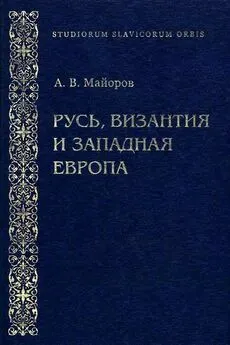
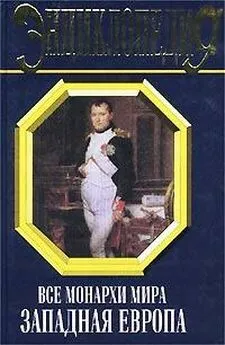

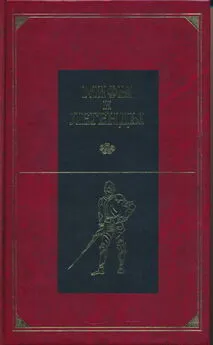

![Анатолий Фоменко - Книга 1. Античность — это Средневековье[Миражи в истории. Троянская война была в XIII веке н.э. Евангельские события XII века н.э. и их отражения в истории XI века]](/books/1124977/anatolij-fomenko-kniga-1-antichnost-eto-srednev.webp)
